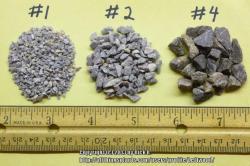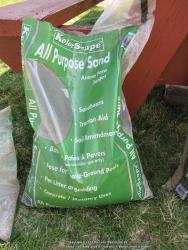As Lorn says, there isn't just one way of doing things.
The objective is to prepare a soil media mix that has very good drainage AND percolation... I'm sure we all agree this is the paramount issue. Although, that is kind of a bombshell: differentiating between drainage and percolation. Not sure what you're getting at here, Lorn, but I am guessing your definitions might be different than mine. Also guessing that most people see the two terms as the same, and some explanations would be helpful?

Indeed, fine sand does hold too much water for our needs here, but given a sufficiently deep column, it drains very well.
No pasteurizing mixes for me, either. Not that it's a bad thing: I'm just lazy and don't feel I need to bother. While being more fastidious very well could produce better results, I'm happy with the organic a approach of allowing nature to balance things out. There will always be the competition between all the soil flora, good and bad. The whole point of pasteurization is to kill the bad organisms and leave the good ones intact. With this thought in mind, I theorize that baking soil to pasteurize it is better than the impreciseness of the microwave. Obviously, there will be initial hot and cold spots in the soil, and at least some the the good fungi will be killed, too. Not to mention that there is guessing involved with the final temperature of the microwaved soil. There would be a much greater chance of not reaching the goal of pasteurization, with only partial elimination of "negative" organisms, or sterilization and killing everything.
I forget now..... what is so bad about composted forest products? I've actually begun to use it more and more as a large component in my mixes in pots that need to stay airy for 3-4 years without repotting. The mixture of small and large pieces is exactly what I need, especially in my fritillaria seed pots. Large size (half inch plus) pieces aid immensely in the draining excess moisture, even when it is surrounded by tiny particles. This is also why it is good to have varying size mineral aggregates (sans fine sand).
So, as I do tend to deal more with species lilies with more widely varying needs compared to hybrids, my media compositions also vary accordingly, sometimes more raw grit and sand, sometimes more organic material, but always trying to maintain an abundance of air space within the mixes. The only thing I might do differently from the aforementioned 70% good potting mix to 30% sand, is to have that 30% include large pieces of mineral aggregate, too, like #2 and #4 size grits (in some situations).

 bag of Kolorscape
bag of Kolorscape
